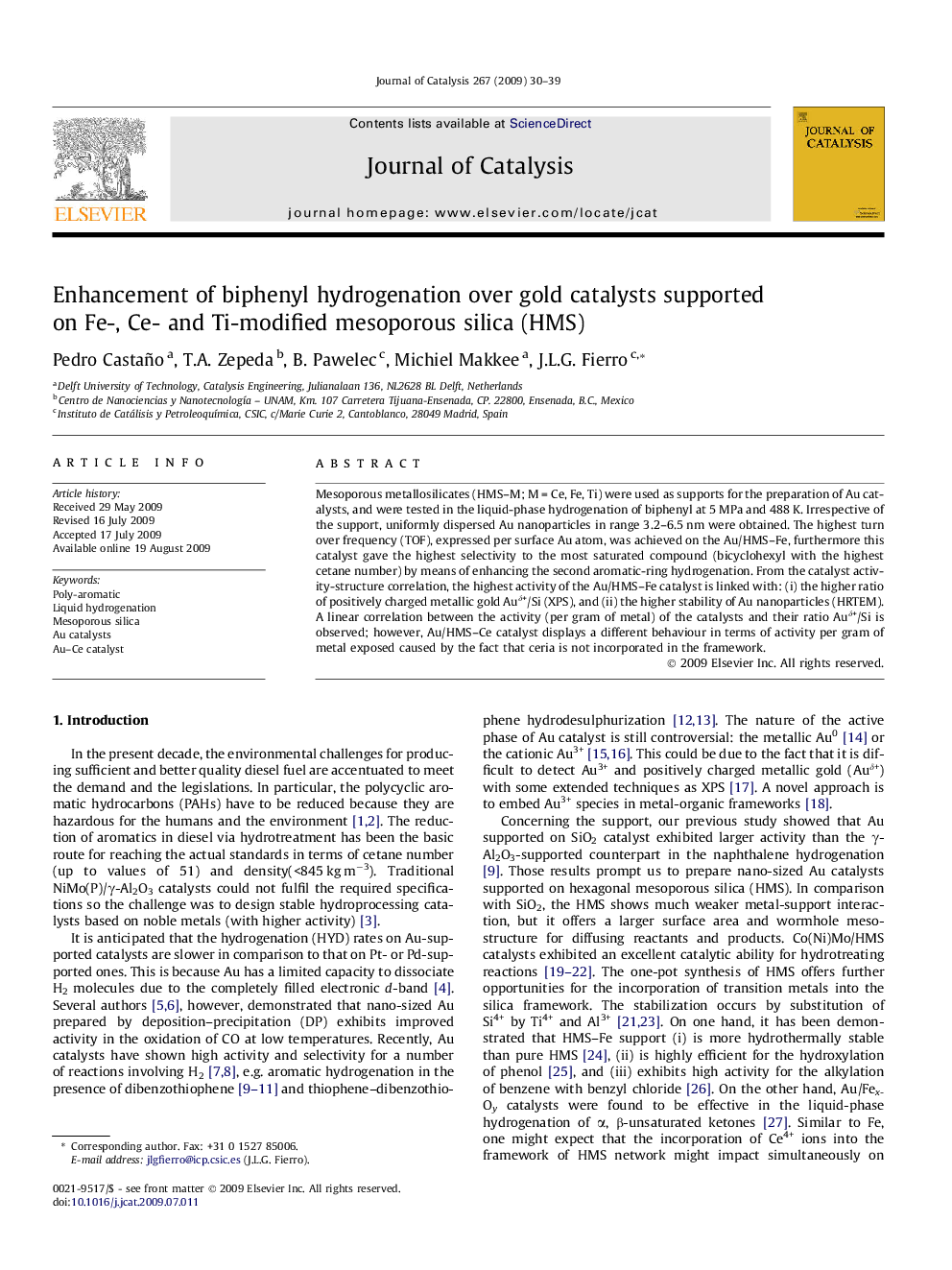| کد مقاله | کد نشریه | سال انتشار | مقاله انگلیسی | نسخه تمام متن |
|---|---|---|---|---|
| 62143 | 47623 | 2009 | 10 صفحه PDF | دانلود رایگان |

Mesoporous metallosilicates (HMS–M; M = Ce, Fe, Ti) were used as supports for the preparation of Au catalysts, and were tested in the liquid-phase hydrogenation of biphenyl at 5 MPa and 488 K. Irrespective of the support, uniformly dispersed Au nanoparticles in range 3.2–6.5 nm were obtained. The highest turn over frequency (TOF), expressed per surface Au atom, was achieved on the Au/HMS–Fe, furthermore this catalyst gave the highest selectivity to the most saturated compound (bicyclohexyl with the highest cetane number) by means of enhancing the second aromatic-ring hydrogenation. From the catalyst activity-structure correlation, the highest activity of the Au/HMS–Fe catalyst is linked with: (i) the higher ratio of positively charged metallic gold Auδ+/Si (XPS), and (ii) the higher stability of Au nanoparticles (HRTEM). A linear correlation between the activity (per gram of metal) of the catalysts and their ratio Auδ+/Si is observed; however, Au/HMS–Ce catalyst displays a different behaviour in terms of activity per gram of metal exposed caused by the fact that ceria is not incorporated in the framework.
This paper describes the properties and kinetic performance of Au/HMS–M (M = [–], Ce, Ti and Fe) catalyst during the aromatic liquid hydrogenation. The trend of catalytic activity is linked with: (i) the higher ratio of positively charged metallic gold Auδ+/Si (XPS), and (ii) the higher stability of Au nanoparticles (HRTEM). A linear correlation between the activity of the catalysts and their ratio Auδ+/Si is observed; however, Au/HMS–Ce catalyst displays an enhanced activity due to the interaction Au–CeO2 which favours the hydrogenation.Figure optionsDownload high-quality image (95 K)Download as PowerPoint slide
Journal: Journal of Catalysis - Volume 267, Issue 1, 1 October 2009, Pages 30–39